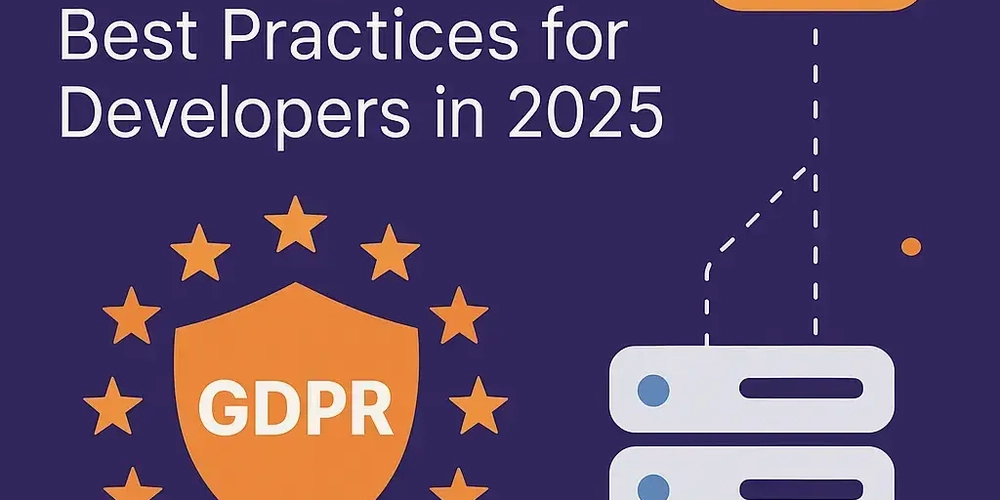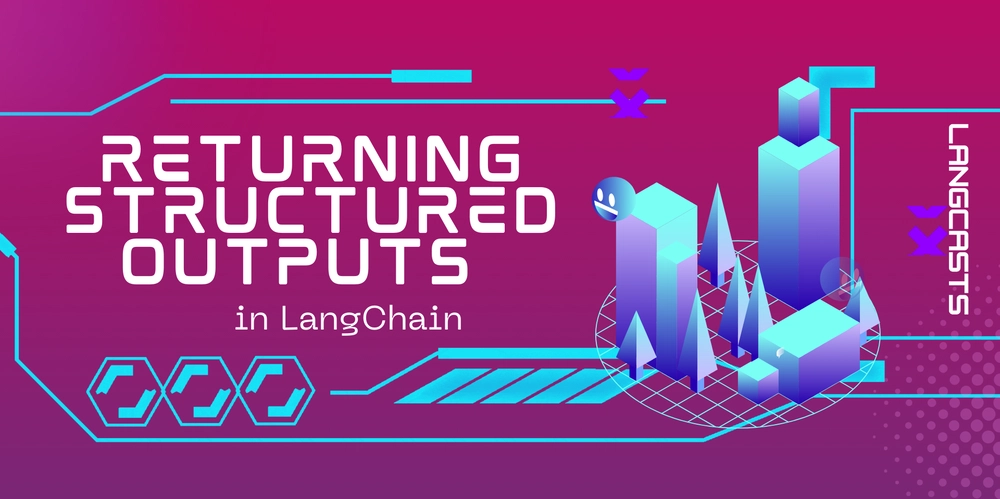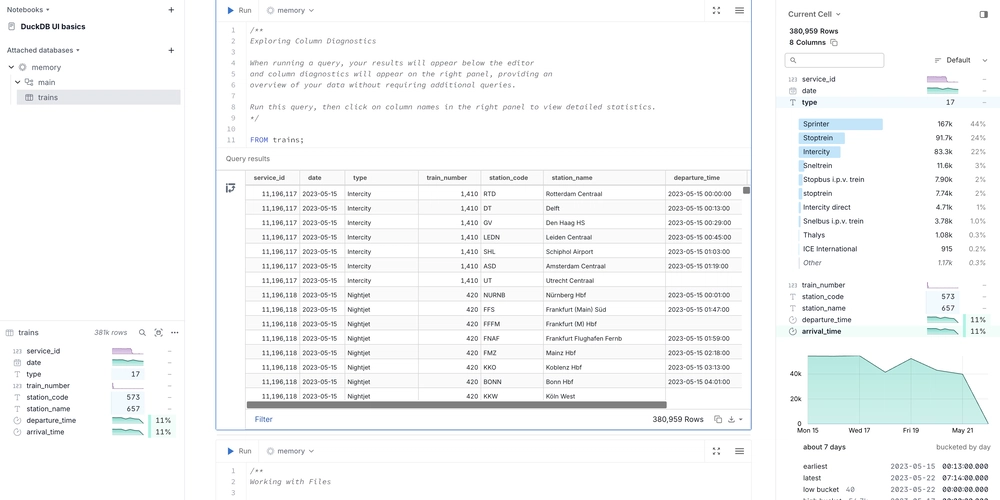GDPR-Compliant Hosting: Best Practices for Developers in 2025
A developer’s road map to creating privacy-conscious apps using safe, EU-based infrastructure 1. Knowing GDPR: What Developers Should Know Redefining how companies and developers handle personal data inside the European Union and outside, the General Data Protection Regulation (GDPR) Enforced by GDPR, which was implemented in 2018, rigorous regulations govern how personal data is gathered, handled, kept, and moved. Its reach is not only for businesses located in the EU but also for any entity handling EU citizen data, hence it is applicable everywhere. GDRP is a design concept for developers, not only a legal framework. Applications’ data handling has to represent privacy by design and by default; thus, compliance has to be ingrained into the system architecture from the start. What Qualifies as Personal Data? GDPR defines personal data widely. It covers any data that may directly or indirectly identify a person, including: Name, email address, phone number Device ID, cookies, IP address Geographical location information Biometric and behavioral data Metadata that seems innocuous even qualifies as personal data if it can be linked to a known person. GDRP Developer Duties: Although legal and compliance departments often write the privacy policies, it is the developers that put in place the real systems handling data. This implies: You should specify a clear goal for every data piece and gather only required data. User consent has to be clear opt-ins, not pre-checked by default. Unauthorized data access has to be controlled by means of access controls. Users have the right to download or delete their data on request, hence data deletion and portability tools must be incorporated. You have to make sure that any APIs and third-party technologies your app uses are also GDPR-compliant. GDPR infractions might lead to significant fines of up to €20 million or 4% of a company’s yearly worldwide income, whichever is greater. Developers are essential in controlling that genuine risk. The European Data Protection Board provides authoritative advice and legal interpretations for a consistent, developer-oriented analysis of GDPR. 2. Data Residency: The Importance of Server Location GDPR compliance rests on data residency. It is the physical or geographical site holding personal data. Storing or processing EU citizens’ data outside the EU under GDPR adds further legal obligations and concerns. Hosting Inside the EU: Legal Simplicity and Data Sovereignty Hosting user data on EU-based servers guarantees its jurisdictional alignment with GDPR. It eliminates the need for extra legal tools such: Standard Contractual Clauses (SCCs) Corporate Rules in Force (BCRs) Endorsed certification systems or norms of conduct Schrems II, a 2020 decision by the Court of Justice of the European Union that nullified the EU–US Privacy Shield system, makes this all the more crucial. The decision underlined that US cloud companies could be forced to share user data with US intelligence agencies under laws like the CLOUD Act, even if the data is kept in European data centers. Real-World Effect: Choosing the Correct Cloud Platform The selection of cloud provider might decide whether you are compliant or exposed to legal risk for developers creating user-facing product any sensitive data healthcare, financial, education, or other application. European suppliers go beyond geographic closeness. They offer: Complete transparency in data management practices Local assistance knowledgeable about EU rules Infrastructure developed with compliance as a fundamental characteristic Many developers and entrepreneurs are thus leaving US hyperscalers and heading for European cloud platforms promising data never leaves the EU. The next parts will look at what qualifies a hosting provider as GDPR-friendly and how to select one that maintains performance, control, and pricing. 3. European Cloud Hosting: A Smarter and Safer Option: Selecting a hosting company is now about trust as much as uptime and speed. The safest and most future-proof choice for developers creating GDPR-compliant apps is to use a cloud provider situated inside the European Union. Why European Cloud Providers Are Unique Although big worldwide platforms might provide EU data center choices, legal jurisdiction is more important than location. US-based businesses might still be under non-EU legislation like the CLOUD Act even if data is physically stored in Europe, which might force them to turn over user data to foreign governments. In contrast, EU-based suppliers run completely under European legislation, which corresponds with GDPR values. This clarifies any uncertainty regarding the management of your users’ data. For developers, European cloud hosting’s main benefits are: Sovereignty of data Your app and user data stay under EU legal authority. Clear compliance policies: EU providers are usually more open about how data is stored, processed, and shared. Reduced legal overhead: Hosti

A developer’s road map to creating privacy-conscious apps using safe, EU-based infrastructure
1. Knowing GDPR: What Developers Should Know
Redefining how companies and developers handle personal data inside the European Union and outside, the General Data Protection Regulation (GDPR) Enforced by GDPR, which was implemented in 2018, rigorous regulations govern how personal data is gathered, handled, kept, and moved. Its reach is not only for businesses located in the EU but also for any entity handling EU citizen data, hence it is applicable everywhere.
GDRP is a design concept for developers, not only a legal framework. Applications’ data handling has to represent privacy by design and by default; thus, compliance has to be ingrained into the system architecture from the start.
What Qualifies as Personal Data?
GDPR defines personal data widely. It covers any data that may directly or indirectly identify a person, including:
- Name, email address, phone number
- Device ID, cookies, IP address
- Geographical location information
- Biometric and behavioral data
Metadata that seems innocuous even qualifies as personal data if it can be linked to a known person.
GDRP Developer Duties:
Although legal and compliance departments often write the privacy policies, it is the developers that put in place the real systems handling data. This implies:
- You should specify a clear goal for every data piece and gather only required data.
- User consent has to be clear opt-ins, not pre-checked by default.
- Unauthorized data access has to be controlled by means of access controls.
- Users have the right to download or delete their data on request, hence data deletion and portability tools must be incorporated.
- You have to make sure that any APIs and third-party technologies your app uses are also GDPR-compliant.
GDPR infractions might lead to significant fines of up to €20 million or 4% of a company’s yearly worldwide income, whichever is greater. Developers are essential in controlling that genuine risk.
The European Data Protection Board provides authoritative advice and legal interpretations for a consistent, developer-oriented analysis of GDPR.
2. Data Residency: The Importance of Server Location
GDPR compliance rests on data residency. It is the physical or geographical site holding personal data. Storing or processing EU citizens’ data outside the EU under GDPR adds further legal obligations and concerns.
Hosting Inside the EU: Legal Simplicity and Data Sovereignty
Hosting user data on EU-based servers guarantees its jurisdictional alignment with GDPR. It eliminates the need for extra legal tools such:
- Standard Contractual Clauses (SCCs)
- Corporate Rules in Force (BCRs)
- Endorsed certification systems or norms of conduct
Schrems II, a 2020 decision by the Court of Justice of the European Union that nullified the EU–US Privacy Shield system, makes this all the more crucial. The decision underlined that US cloud companies could be forced to share user data with US intelligence agencies under laws like the CLOUD Act, even if the data is kept in European data centers.
Real-World Effect: Choosing the Correct Cloud Platform
The selection of cloud provider might decide whether you are compliant or exposed to legal risk for developers creating user-facing product any sensitive data healthcare, financial, education, or other application.
European suppliers go beyond geographic closeness. They offer:
- Complete transparency in data management practices
- Local assistance knowledgeable about EU rules
- Infrastructure developed with compliance as a fundamental characteristic
Many developers and entrepreneurs are thus leaving US hyperscalers and heading for European cloud platforms promising data never leaves the EU.
The next parts will look at what qualifies a hosting provider as GDPR-friendly and how to select one that maintains performance, control, and pricing.
3. European Cloud Hosting: A Smarter and Safer Option:
Selecting a hosting company is now about trust as much as uptime and speed. The safest and most future-proof choice for developers creating GDPR-compliant apps is to use a cloud provider situated inside the European Union.
Why European Cloud Providers Are Unique
Although big worldwide platforms might provide EU data center choices, legal jurisdiction is more important than location. US-based businesses might still be under non-EU legislation like the CLOUD Act even if data is physically stored in Europe, which might force them to turn over user data to foreign governments.
In contrast, EU-based suppliers run completely under European legislation, which corresponds with GDPR values. This clarifies any uncertainty regarding the management of your users’ data.
For developers, European cloud hosting’s main benefits are:
- Sovereignty of data Your app and user data stay under EU legal authority.
- Clear compliance policies: EU providers are usually more open about how data is stored, processed, and shared.
- Reduced legal overhead: Hosting with an EU provider might remove the requirement for SCCs or extra compliance systems for cross-border transfers.
- Proactive privacy culture: European businesses usually include data protection into their design and support processes, hence facilitating developer compliance maintenance.
A Case for EU Platforms That Are Developer-Friendly
Many contemporary EU cloud providers now provide a complete set of developer tools including APIs, CLI interfaces, infrastructure automation, private cloud capabilities, and support for container orchestration (like Docker or Kubernetes). Combining technical flexibility with regulatory safety, they are a good choice for GDPR-aware development.
For instance, services such as UpCloud offer:
- GDPR-compliant infrastructure with data centres all around Europe
- High-performance virtual machines tuned for I/O-heavy applications
- Snapshots for safe infrastructure management, private networking, and firewalls
- Starting at €3/month, transparent pricing is perfect for startups, side projects, or MVPs.
Hosting in Europe no longer calls for sacrificing performance or developer experience. Indeed, for 2025 and beyond, it could be the most dependable and responsible option.
4. Best Practices for Hosting Compliant with GDPR
GDPR compliance still relies on how you handle and process data even with the appropriate cloud provider. Your duty as a developer is to make sure the application and infrastructure layers satisfy legal requirements.
These are crucial hosting techniques helping to ensure compliance:
1.Reduce Data Gathering
Collect only personal data absolutely need for your app to operate. Should a function not need a user’s birthdate or phone number, ignore it. It streamlines compliance and lowers risk.
Idea:
A fundamental principle of GDPR is data minimization.
2. Data in Transit and at Rest Encryption
HTTPS should be used to encrypt any data moving between your users and your server. Especially if you are keeping passwords, financial information, or health records, you should also encrypt sensitive data at the storage level.
Many EU cloud systems allow:
- Disk encryption built-in
- TLS certificates from Let’s Encrypt
- Snapshots and encrypted backups
3. Apply Logging and Access Controls
Any system handling personal data should have rigorous access policies. That data should only be read, written, or processed by authorized services and users.
- Implement role-based access control (RBAC)
- Keep audit trails and access logs for responsibility
- Log automatically unsuccessful login attempts, API problems, and permission changes
4. Give Users Control Over Their Data
Let people manage their data.
- Your software should let users: View and download their personal data (data portability)
- Ask for data deletion (right to erasure)
- Change their data should it be wrong (right to rectification)
Incorporate these processes into your backend services or application interface. When possible, make sure deletion requests also delete data from backups or archived settings.
5. Examine All Third-Party Services
For analytics, payments, or customer support, many developers depend on SaaS tools or APIs. Ensure all third-party tools you include are also GDPR-compliant. Should they handle any personal data, you have to sign a Data Processing Agreement (DPA) with them.
Before including a service, inquire:
- Where is this supplier located?
- Where will data from users be kept?
- Do they provide GDPR-compliant DPAs?
- Can people choose to forego their tracking?
6. Revise Cookie Consent Systems and Privacy Policies
Make sure your app has a clear privacy policy detailing what data is gathered, how it is used, and how users may regulate it. Under GDPR and ePrivacy regulations, a cookie banner with opt-in/opt-out choices is required should you utilize cookies or trackers.
5. Sensitive Applications and Private Cloud:
For most applications, a well-configured public cloud environment particularly with an EU-based provider delivers more than enough security and compliance assistance. Your software may need more deployment using a private cloud, though, if it deals especially sensitive types of personal data.
What Is a Private Cloud?
A private cloud is a dedicated environment offering isolated resources including virtual machines, storage, and networking not shared with other customers.
A private cloud is a specialized environment usually virtual computers, storage, and networking not shared with other consumers providing isolated resources. A private cloud can be operated by you:
- Using your own physical infrastructure on-premises
- On rented servers in a data center of a cloud provider
- As a managed private cloud option from a provider such as UpCloud or others
Private cloud hosting offers improved control over your data flows, network segmentation, access controls, and regulatory protections.
When to Use Private Cloud
A private cloud is particularly pertinent if you work in industries where regulatory enforcement, data secrecy, and integrity are extremely important. These consist of:
- Healthcare: Under rules including GDPR and national laws, protected health information (PHI)
- Legal and financial services: Legal records, payment processing, client data
- Student records, tests, personal learning data
- Projects in the government and public sector
In such situations, you could require:
- Dedicated servers to follow national data regulations
- Sophisticated access controls and tracking
- Finer-grained encryption, audit trails, and tailored firewall policies
- Separated settings for internal applications or critical APIs
Advantages of Private Cloud for GDPR-Focused Development:
Running your software in a private cloud lets you satisfy certain data processing controls set forth by GDPR, including:
- Article 25: Data protection by design and by default
- Article 32: Processing security under
- Article 35: DPIA–Data Protection Impact Assessments
Modern companies make this easier by offering customizable private cloud hosting with:
- VLANs and custom IP ranges
- Safe tunnels across several settings
- Controls at firewall level
- Complete disk encryption
- DDoS defense and managed backups
You may match both infrastructure and jurisdiction with GDPR from end to end if your hosting provider is headquartered in the EU and provides private cloud as a managed service.
6. Last Advice and Tools:
Though it may appear difficult for a developer to negotiate GDPR compliance, the correct infrastructure, tools, and attitude make it really simple. Here is a last resource list and checklist to keep you focused.
Developers’ GDPR-Compliant Hosting Checklist
Select a cloud provider based in the EU
Make that the company runs under EU jurisdiction and is based in main office.
Rely only on EU data centers
Unless you have appropriate transfer protections, avoid hosting data outside the EU.
Encrypt all data in transit and at rest
Make sure backups and drives are secured and use HTTPS.
Gather just the information you require
Reduce personal data gathering and justify your reasons for doing so.
Allow and empower users
Include functions for data export, revision, and deletion in your software.
Review all third-party services
Make sure customer tools, payments, or analytics are GDPR-compliant and include DPAs.
Keep records and use access controls
Use firewalls, RBAC, and audit logs to help safeguard your system.
Allow safe cookies and HTTPS
No production site should be operating on HTTP or utilizing insecure session data.
Revise your cookie banners and privacy policy
Make it obvious, simple to use, and ePrivacy compliant.
Document everything
Maintain a record of how your app safeguards user data from internal processes to DPIAs.
Recommended Resources:
-
EDPB — European Data Protection Board
Official guidance and legal interpretations of GDPR. -
EU GDPR Portal
Informational site explaining GDPR principles, rights, and obligations. -
UpCloud Getting Started FAQ
Includes GDPR compliance notes and guidance on hosting data safely.




























![[Webinar] AI Is Already Inside Your SaaS Stack — Learn How to Prevent the Next Silent Breach](https://blogger.googleusercontent.com/img/b/R29vZ2xl/AVvXsEiOWn65wd33dg2uO99NrtKbpYLfcepwOLidQDMls0HXKlA91k6HURluRA4WXgJRAZldEe1VReMQZyyYt1PgnoAn5JPpILsWlXIzmrBSs_TBoyPwO7hZrWouBg2-O3mdeoeSGY-l9_bsZB7vbpKjTSvG93zNytjxgTaMPqo9iq9Z5pGa05CJOs9uXpwHFT4/s1600/ai-cyber.jpg?#)














































































































































![[The AI Show Episode 144]: ChatGPT’s New Memory, Shopify CEO’s Leaked “AI First” Memo, Google Cloud Next Releases, o3 and o4-mini Coming Soon & Llama 4’s Rocky Launch](https://www.marketingaiinstitute.com/hubfs/ep%20144%20cover.png)





































































































































































































![Rogue Company Elite tier list of best characters [April 2025]](https://media.pocketgamer.com/artwork/na-33136-1657102075/rogue-company-ios-android-tier-cover.jpg?#)







































































_Andreas_Prott_Alamy.jpg?width=1280&auto=webp&quality=80&disable=upscale#)





































































































![Apple Watch Series 10 Back On Sale for $299! [Lowest Price Ever]](https://www.iclarified.com/images/news/96657/96657/96657-640.jpg)
![EU Postpones Apple App Store Fines Amid Tariff Negotiations [Report]](https://www.iclarified.com/images/news/97068/97068/97068-640.jpg)
![Apple Slips to Fifth in China's Smartphone Market with 9% Decline [Report]](https://www.iclarified.com/images/news/97065/97065/97065-640.jpg)



































































































































